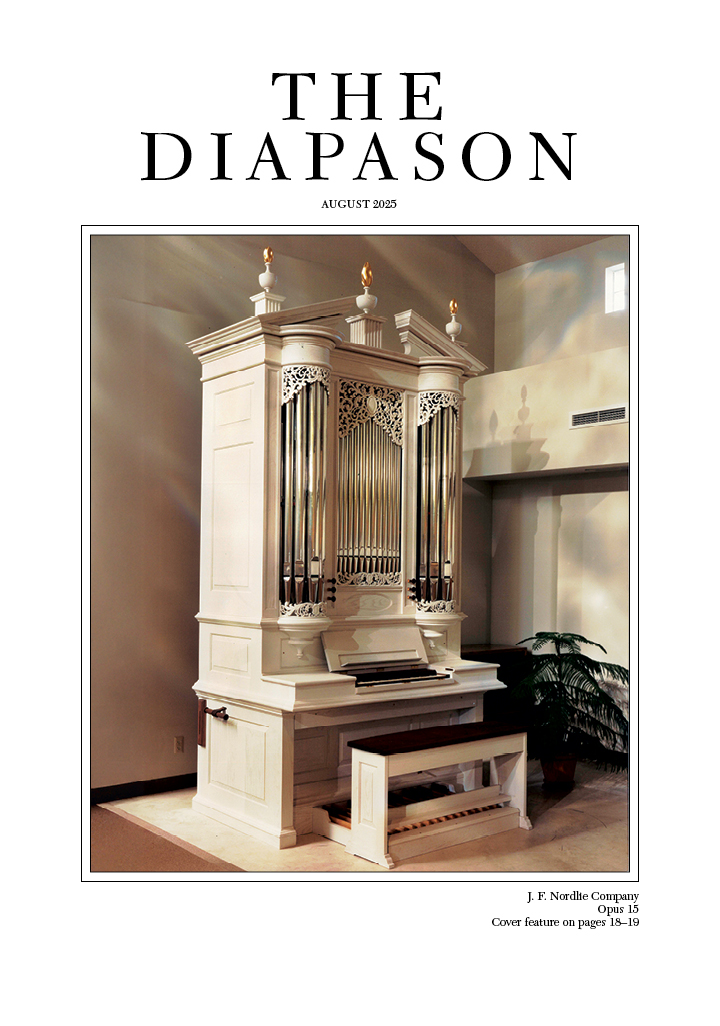Michael Bauer is Professor of Organ and Church Music at The University of Kansas.

The University of Iowa, in conjunction with the River Valley
and University of Iowa chapters of the AGO, sponsored their annual Institute
for Sacred Music, February 22-24. This event, bringing together leading
scholars in the field of church music with outstanding organists and choral
conductors, has become an important addition to the academic and ecclesiastical
landscape of the Midwest. The clinicians for this year's institute were Frank
Burch Brown, the Frederick Doyle Kershner Professor of Religion and the Arts at
Christian Theological Seminary in Indianapolis; Carol Doran, Professor of Music
and Liturgy and Seminary Organist at Virginia Theological Seminary; and John
Chappell Stowe, Professor of Music at the University of Wisconsin-Madison.
Frank Burch Brown is widely recognized as one of the
foremost authorities on issues related to theology and the arts. His most
recent book, Good Taste, Bad Taste, Christian Taste
style='font-style:normal'>, is among the finest works of its kind. Brown's
thoughtful and carefully nuanced approach to issues raised during the so-called
"culture wars" is a welcome addition to what has become an intensely
polemical debate. At Iowa, Brown spoke first on the topic "Ecumenical
Taste and the Music of the Church." Brown views himself as a facilitator,
helping the church find new ways to discuss taste as a factor in religious
experience. His basic thesis during this talk was the need to be inclusive with
respect to different musical styles, while at the same time maintaining a
critical stance in regard to musical quality.
Brown believes that there is a tendency for musicians to
universalize their own personal taste and attempt to make it normative for
everyone. This is especially true for highly trained specialists. It can lead
to dogmatic elitism, dividing the specialist from other believers. The opposing
viewpoint is represented by those who simply think that everyone has a right to
their own opinion. Given this logic, an individual's likes and dislikes become
the sole criteria employed when making aesthetic judgments. For Brown, in the
final analysis, neither of these two options is adequate. Grounded in the moral
imperative to love, Brown pushes the church to extend the boundaries of
taste--to make taste itself more ecumenical. He also recognizes that the church
must seek to offer its best gifts to God, always acknowledging that the finest
human efforts still fall short of the mark. Grace is God's final response in
the face of human frailty.
Brown's second lecture was entitled "Sacred Music and
Secular Music--What Is the Difference?" Citing numerous examples of
style="mso-spacerun: yes"> "secular" music that later
took on a "sacred" function, Brown discussed different ways that
these terms could be applied. He suggested that the proper musical "tone
of voice" might make a particular piece fitting for worship. This was
demonstrated through recorded examples, many of which were taken from Handel's
Messiah.
Finally, Brown focused on the question of religious meaning.
He believes that human formation provided by the church can elicit religious
potential from music in ways that would not otherwise be possible for the music
alone. Two of the great tasks for the church are to discern the underlying
religious potential in secular music, and to highlight the true religious
dimension of the sacred music the church has called its own.
Carol Doran, well known for her contributions in the field
of hymnody, spoke on two topics, "The People's Song" and "Living
into New Ways." In her lectures she outlined many of the purposes of
congregational song. Doran spoke with great conviction about the need for
church musicians to adapt to new circumstances, to imaginatively renew the
people's song and make it meaningful once again. The means to this end is through
the combination of pastoral and prophetic musicianship. This combination is
difficult to balance, but an essential component of a church musician's mission
in an era of great change. Doran reminded the participants that change is
difficult, yet it is essential to good health and part of God's plan for the
universe. In concert with Brown, she added that the church must develop a taste
for diversity and be guided finally by love. The institute worship service gave
Doran the opportunity to demonstrate many of the ideas she spoke about in her
lectures.
John Chappell Stowe both played and spoke at the conference.
Over the years Stowe has become known as an innovator in his recital
programming and an authority on Italian baroque organ music. He demonstrated
both qualities in a masterfully played recital.
Stowe presented lectures entitled "What Is Essential to
the Training of Today's Church Musician" and "Authenticity,
Performance, and Ministry: Can There Be a Blessed Trinity?" His first
lecture was organized around Jesus's statement "I am the way, the truth,
and the life" (John 14:6). This formed the foundation for a discussion of
how to teach church music ("the way"), what should be taught to
church music students ("the truth"), and the contextual issue of how
to integrate the job of a church musician with a faithful life ("the
life"). Throughout his talks, Stowe called for the church to take Christ
as a model, to ask serious questions about what and how we should be teaching
the next generation of church musicians.
In addition to the foregoing events, students from the
University of Iowa Organ Area performed a superb recital, and there was a
closing panel discussion. The 2003 Institute was indeed a great success.
Congratulations are due to coordinators Delbert Disselhorst, Brett Wolgast,
Robert Triplett, and Andrew Hicks.


